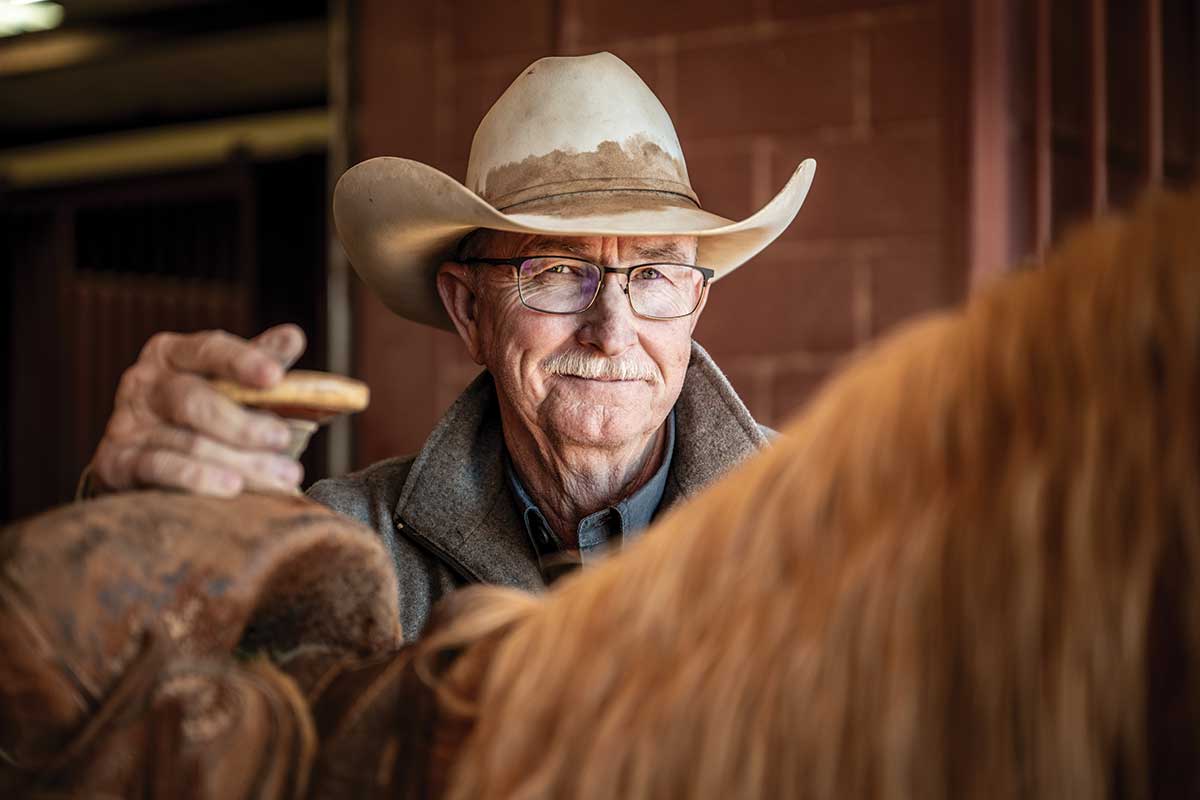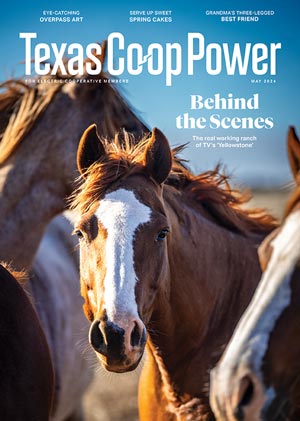If you watched Yellowstone spinoff 1883, you probably saw Joe Leathers. But you likely didn’t know it.
He was on screen for about three seconds, driving cattle on horseback.
“It was a long-distance shot, so you couldn’t tell it was me,” he says.
It was a bit part, but Leathers is the leading man at the ranch that has become a centerpiece for the Yellowstone TV series. He has managed West Texas’ Four Sixes Ranch since 2008.
The show and its characters are make-believe, but Leathers’ work is quite real. He spends “as many days as possible” working cattle with his colleagues at the ranch, though his job keeps him out of the saddle more than he would like.
Yellowstone, created and written by actor Taylor Sheridan, tells the story of a fictional Montana ranch owned by the Dutton family. Four Sixes makes its on-screen debut in the fourth season, when ranch hand Jimmy Hurdstrom is sent away to improve his attitude and cowboy skills. But instead of hating it, Jimmy loves the ranch and wants to stay there.
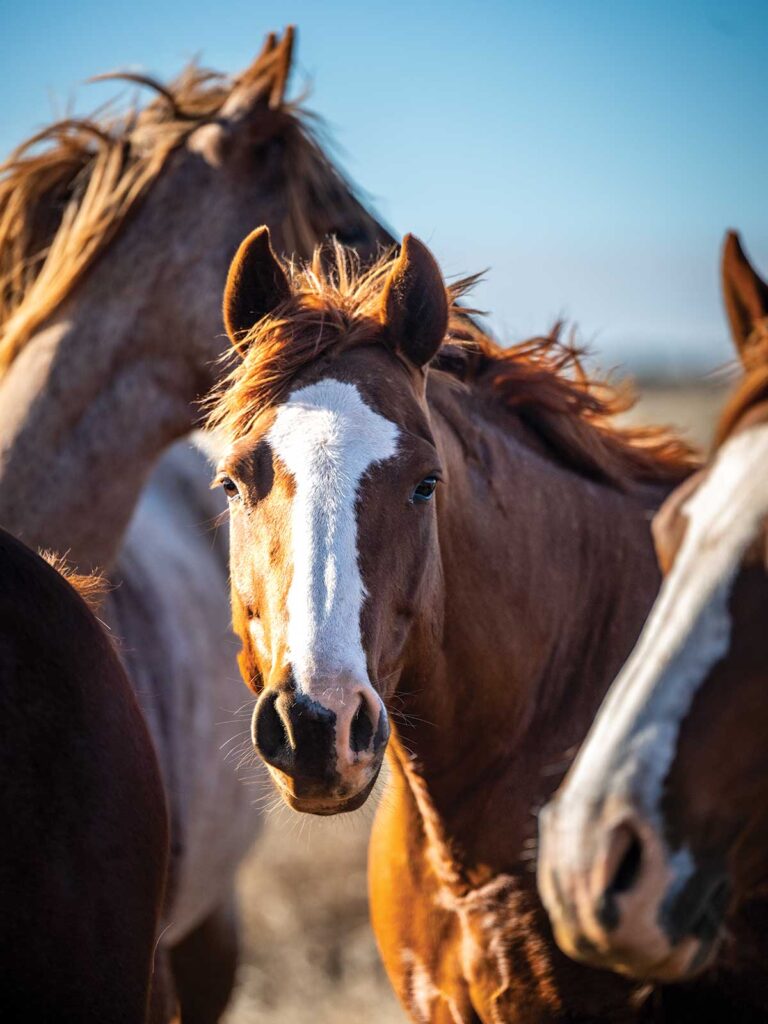
Some of the 700–800 quarter horses at the Four Sixes Ranch.
R.J. Hinkle
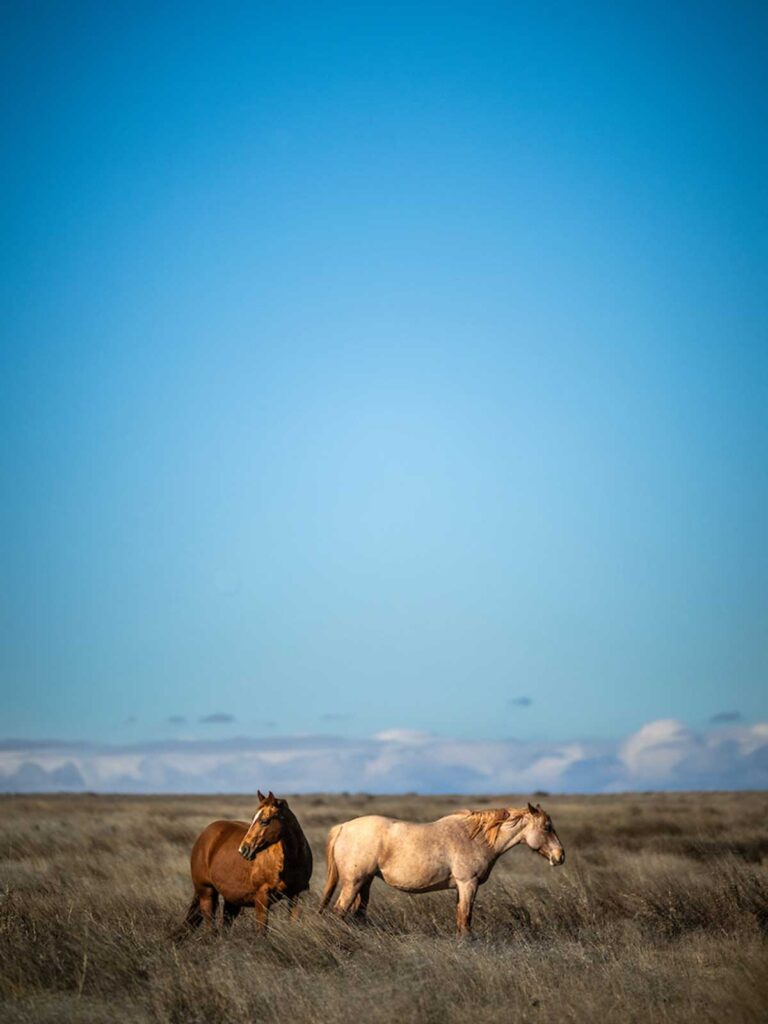
The mare pasture at Four Sixes Ranch in West Texas.
R.J. Hinkle
The real-life Four Sixes covers more than a quarter-million acres, making it one of the 10 largest ranches in Texas.
The main ranch, near Guthrie, east of Lubbock, comprises 142,372 acres and gets its electricity from South Plains Electric Cooperative. In the Panhandle, the Dixon Creek Ranch division in Carson and Hutchison counties spans another 114,455 acres. A third portion, the Frisco Creek Ranch division, covers 9,428 acres in Sherman County and is served by Rita Blanca Electric Cooperative.
There are plenty of outdoor sights to film at the ranch, including sprawling fields and swift, beautiful horses herding cattle. Wildlife includes quail, deer, Barbary sheep, turkeys, wild hogs, coyotes, bobcats, migrating ducks and geese, songbirds, rattlesnakes, and even some antelope. Every year the main ranch house is surrounded by migrating butterflies for two or three days around Halloween. “It’s the most beautiful sight,” Leathers says.
The Burnett family established Four Sixes more than 150 years ago and passed it down for four generations.
In 1870, Samuel “Burk” Burnett bought some cattle already branded 6666 (contrary to a legend about the ranch being named for a winning poker hand). He kept on buying more land and more cattle, and the four sixes stuck.
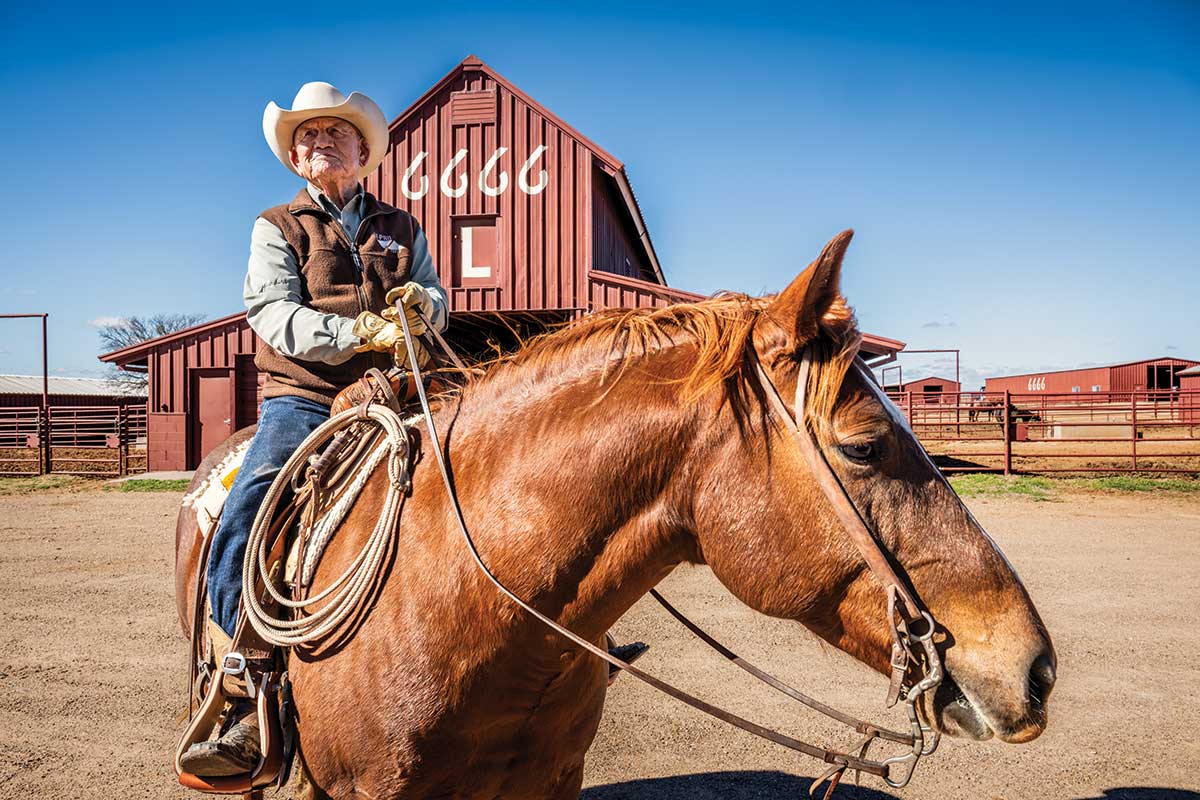
Boots O’Neal has been a working cowboy for more than 75 years, including 30-plus years at Four Sixes.
R.J. Hinkle
Burnett left the ranch to his only surviving grandchild, Anne Valliant Burnett Hall (later Tandy), in trust for her unborn child. Upon the death of “Miss Anne,” as she was known, in 1980, her only child, Anne Burnett Windfohr Marion, inherited her grandfather’s and great-grandfather’s estates, including Four Sixes.
Nowadays, Four Sixes is a whole lot more than a part-time TV set. It’s still a working ranch with large herds of high-quality beef cattle and the quarter horses it breeds.
The ranch raised longhorns, shorthorns and Herefords in its earlier years, but for the past 25 years, the cattle herd has been entirely Black Angus. Leathers says this breed has provided the most consistent quality.
One thing that hasn’t changed: The cattle have always been cared for the same way—on horseback. Each of the 16–18 cowboys working the ranch has several quarter horses for their work. Vaquero (Spanish for cow herder) is Leathers’ favorite horse. He says the sorrel gelding “has a big motor. He’s tough, very athletic and has a lot of cow sense. He’s a pretty exceptional horse.”
The ranch’s use of quarter horses is no wonder given that Marion and Four Sixes have a deep connection with the breed. Marion’s mother, Miss Anne, co-founded the American Quarter Horse Association in 1940, and Marion displayed a devotion to her animals.
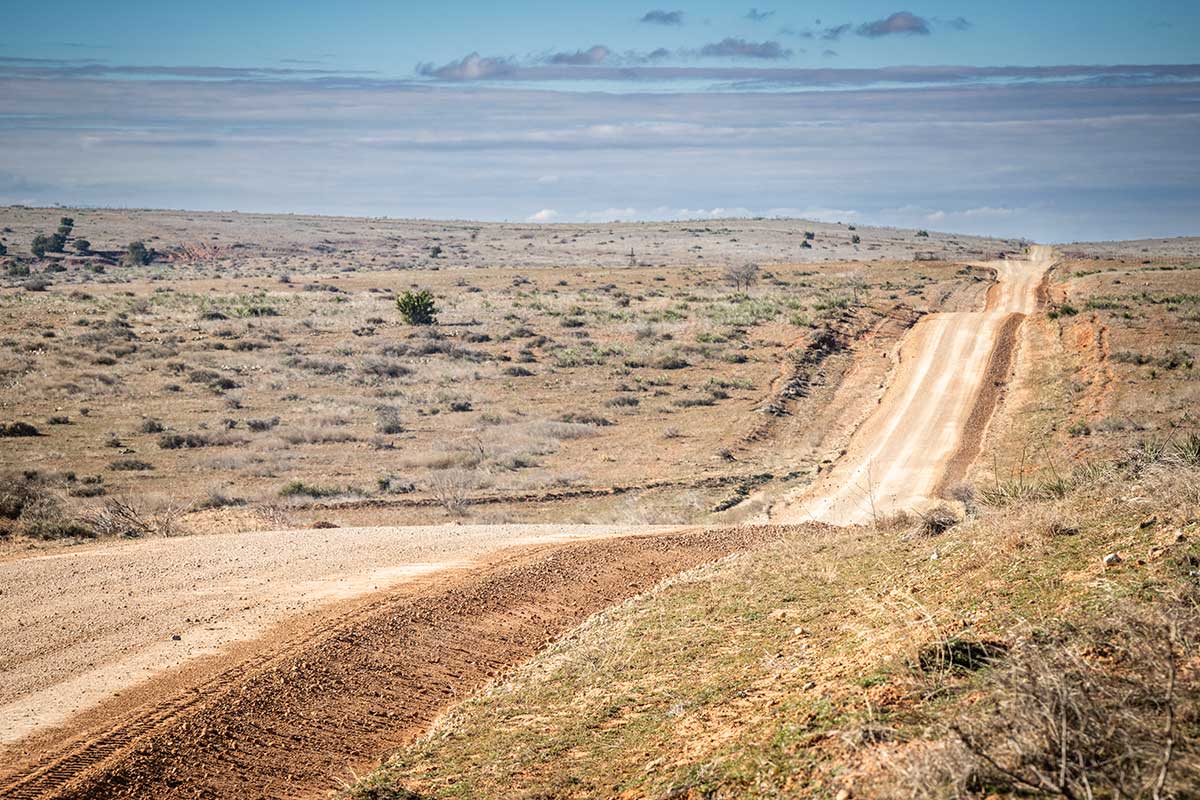
The Four Sixes is one of the 10 largest ranches in Texas.
R.J. Hinkle
“Anne [Marion] was a strong woman, a very good businessperson. She knew cattle and horses,” Leathers says. “Anne was very giving and very demanding. She didn’t set you up for failure. She set you up for success.”
During one crisis, the drought of 2010–11, the ranch went to great lengths to keep its herd and its acres healthy.
“There was no water between Guthrie and Nebraska,” Leathers says. “We ended up taking our cattle to nine ranches in five states, leasing land to make sure we didn’t hurt our land. Our herd was not completely back home until 2015.”
After Marion assumed control of Four Sixes in 1980, she hired Dr. Glenn “Doc” Blodgett as the ranch’s resident veterinarian and horse division manager. Together they established a first-class quarter horse breeding program. Adding artificial insemination services for Four Sixes’ stallions allowed mares across the U.S. to be bred to them.
Today, Dr. Nathan Canaday fills Blodgett’s role. He and two associate veterinarians care for the ranch’s herd of 700–800 quarter horses.
Canaday first came to the ranch in 2006 as a college intern at the veterinary hospital. He returned the next summer. The experience “convinced me to become a veterinarian,” he says. “I thought if I could become a veterinarian at a large ranch like Four Sixes, I would have my dream job.” Canaday became a full-time vet at Four Sixes in 2011 and assumed his current role in 2022, after Blodgett died.
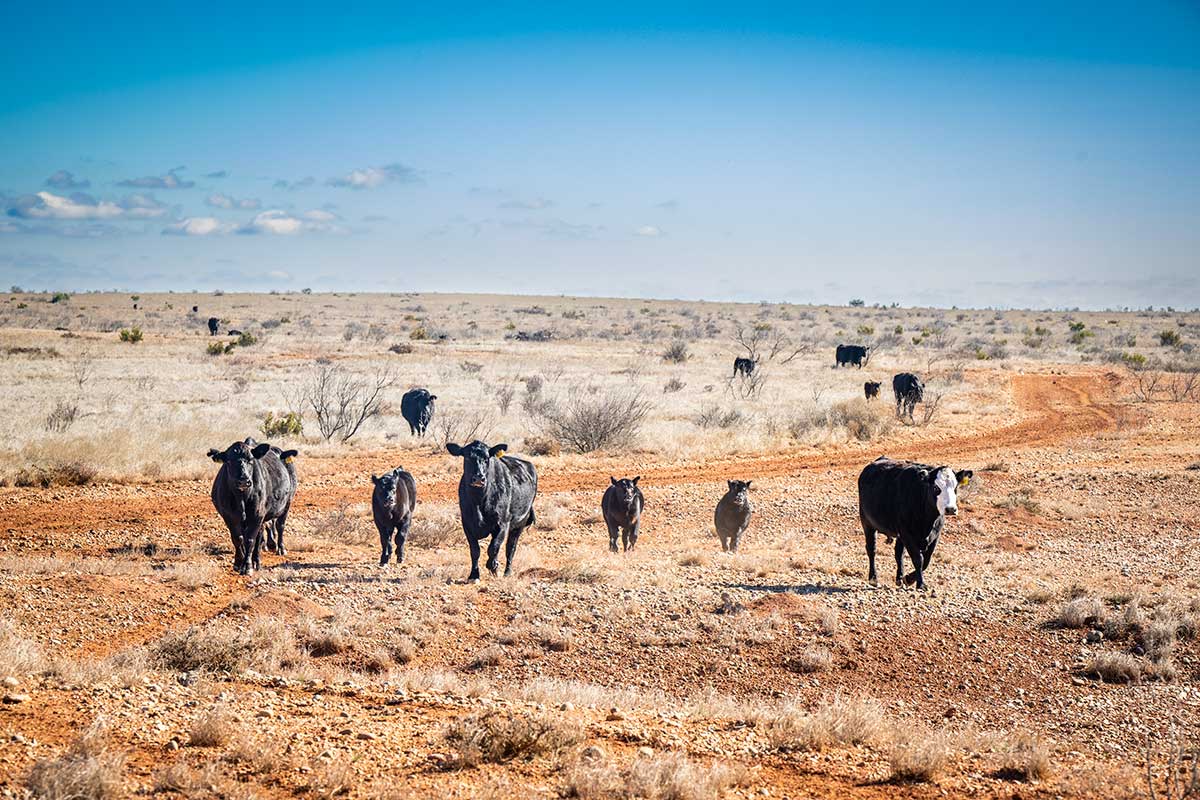
The cattle herd has been entirely Black Angus for the past 25 years.
R.J. Hinkle
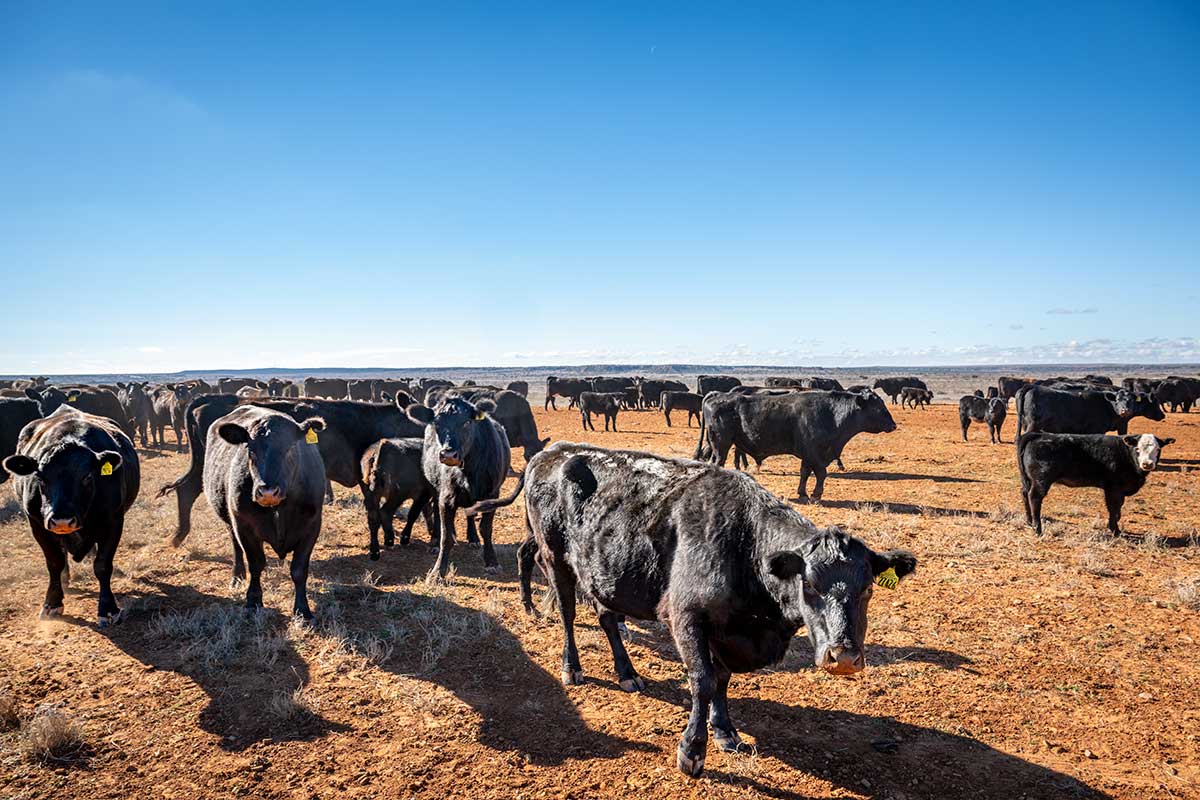
Leathers says Black Angus provide the most consistent quality.
R.J. Hinkle
The veterinary team works out of a clinic with state-of-the-art imaging and other equipment. The hospital also serves other residents in the area, including several big ranches. Canaday says he and his team are the only vets within 60 miles. They treat the region’s horses for colic and lameness, do dentistry work, and even provide breeding services.
“We keep the history and culture of ranching, but we operate on the cutting edge of veterinary medicine,” Canaday says.
When Sheridan decided to add the Texas storyline to Yellowstone, he secured Marion’s permission to film at Four Sixes. Though shooting the show means bringing a small army of hundreds of cast and crew members to the ranch, it “really doesn’t interfere with ranch work,” Leathers says. “There’s a lot of people, equipment and vehicles, but they get it done and then they’re gone.”
Pandemic restrictions delayed the filming of Season 4 until August 2020, and it began to air in late 2021. Sadly, Marion didn’t live to see her beloved ranch on TV. She died in February 2020 at the age of 81. Her will stipulated that all her ranch holdings be sold.
That meant Four Sixes would not be Burnett family-owned for the first time since its founding. Fortunately, a new owner who shared the family’s values was interested. Sheridan, who was raised in Fort Worth, put together a group of investors and became the majority owner in 2022.
Sheridan also has a ranch down the road, in Weatherford, and another in Wyoming. But this one is special for him.
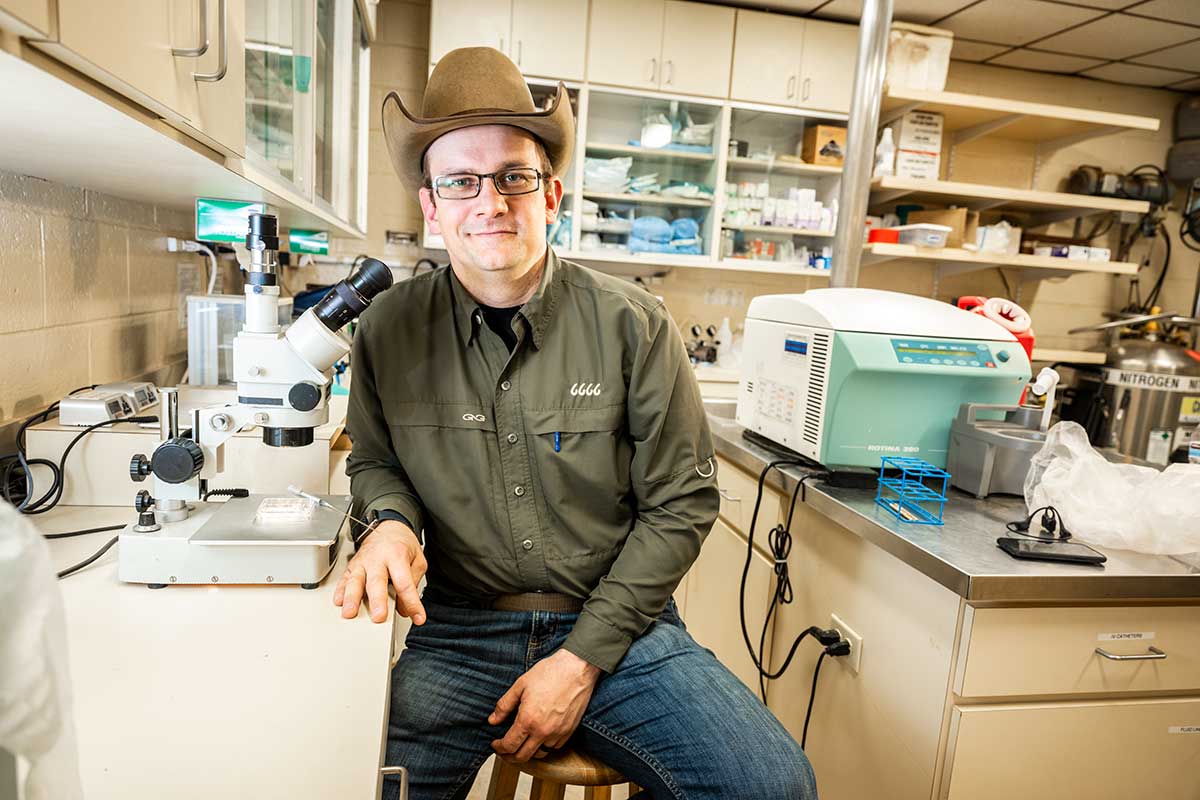
Dr. Nathan Canaday is the chief veterinarian at the Four Sixes.
R.J. Hinkle
“It’s a love affair with the land of West Texas,” Sheridan told Fort Worth Magazine in 2022. “There’s a tremendous amount of discipline that it takes to build a ranch like this. It takes strength, excellence, integrity and faith, and that’s the main mission statement of the ranch. We’re going to live up to that.”
Leathers says that having all of Four Sixes under one owner helped the ranch exist for 150 years. Now that the ranch is in Sheridan’s hands, “he’s determined for it to be here for another 150 years,” Leathers says.
“You have to make money for the ranch to be successful, but you can still hold on to the traditions. Taylor has a passion for the cowboy life. Four Sixes will continue it on. We’ll continue to be a leader in breeding and ranching.”
Protecting that legacy means protecting the animals and the land of Four Sixes through conservation. The ranch works with an environmental firm and employs a variety of best practices.
To prevent soil erosion and save precious water, workers have built dams to create small lakes and ponds. They’ve cleared 100,000 acres of invasive mesquite and cedar. Composted manure from the barns is the only fertilizer used.
Leathers is proud of how they’re caring for the land that has served generations of Texans.
“The cattle and the wildlife are not just coexisting,” he says. “They’re both thriving.”
